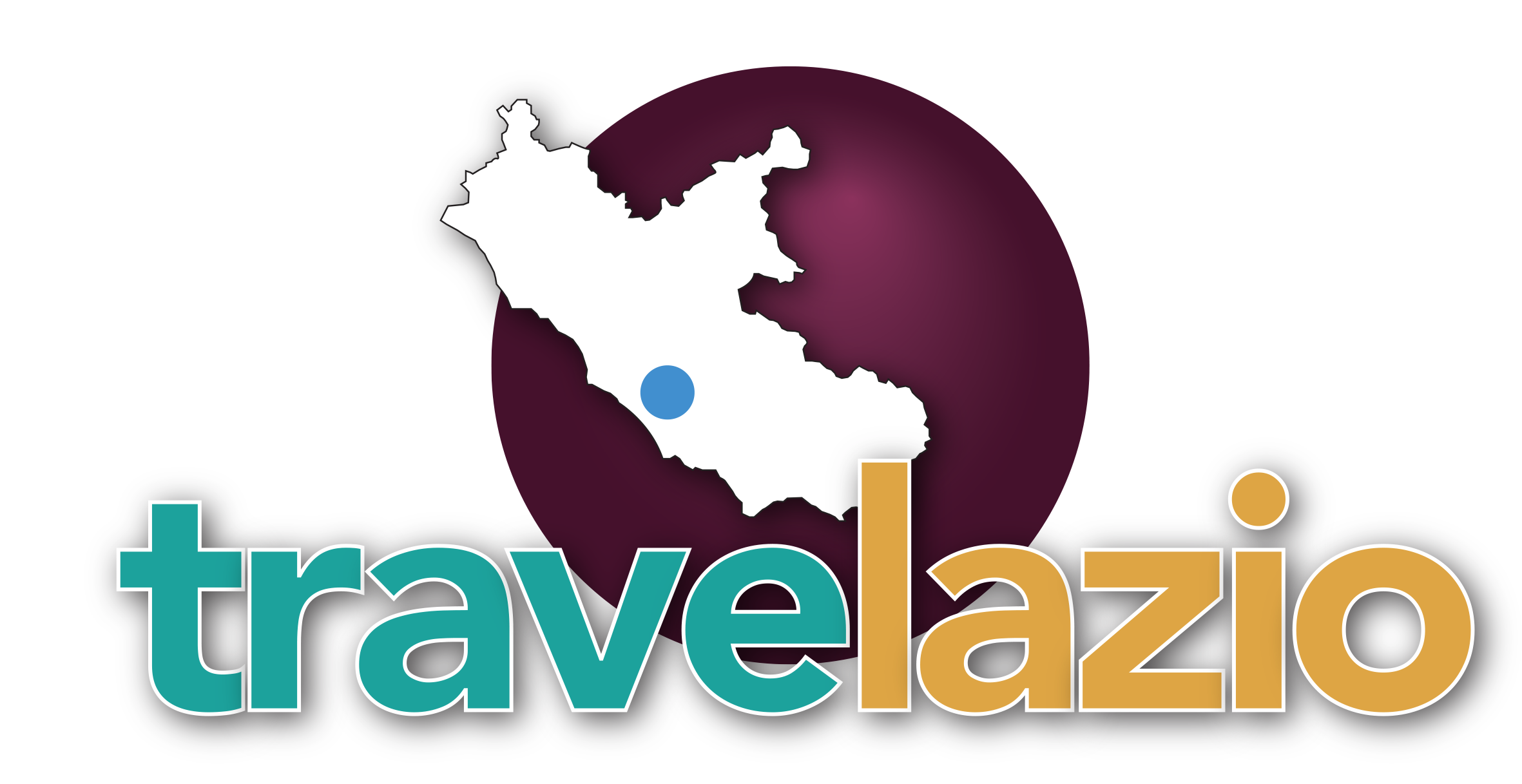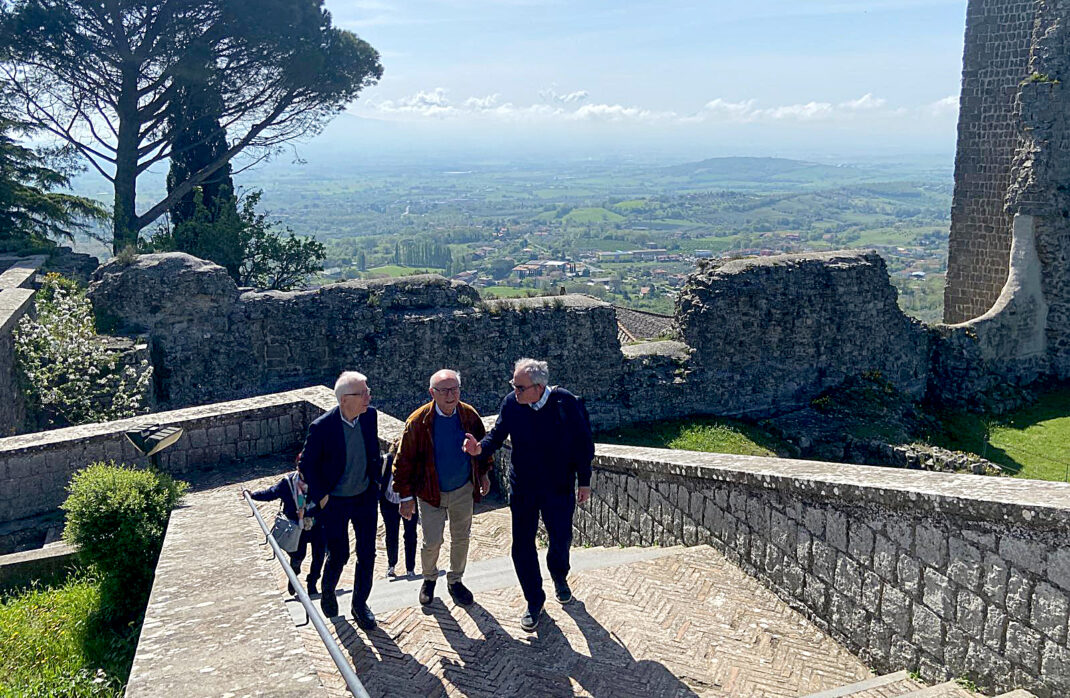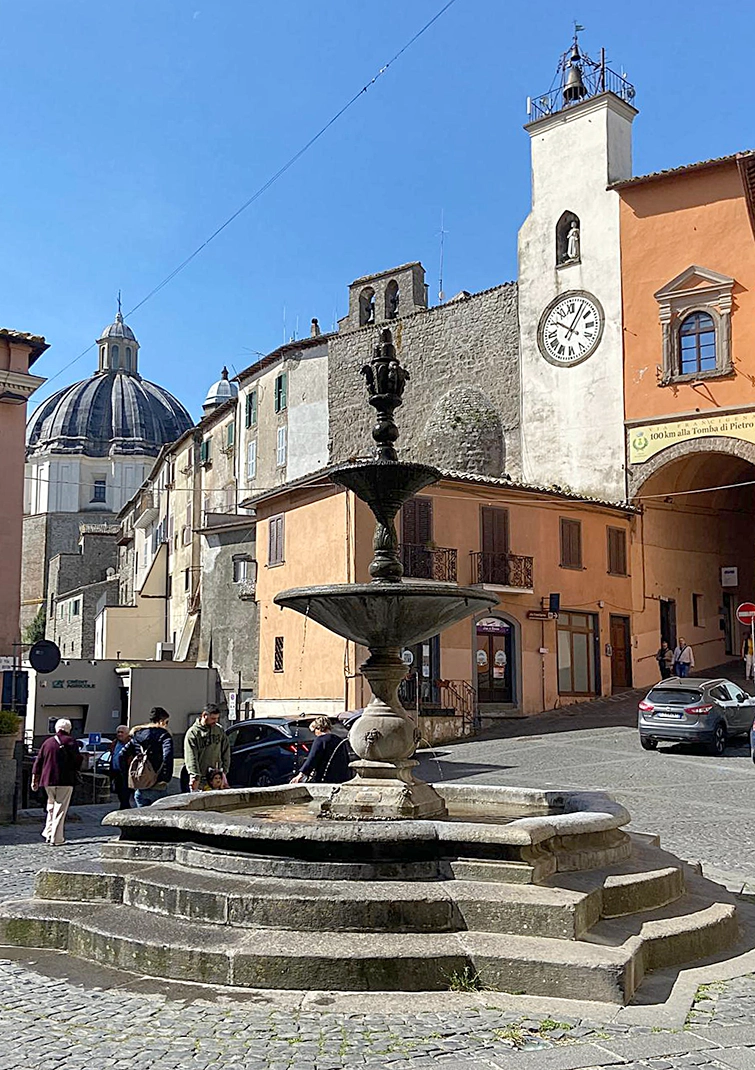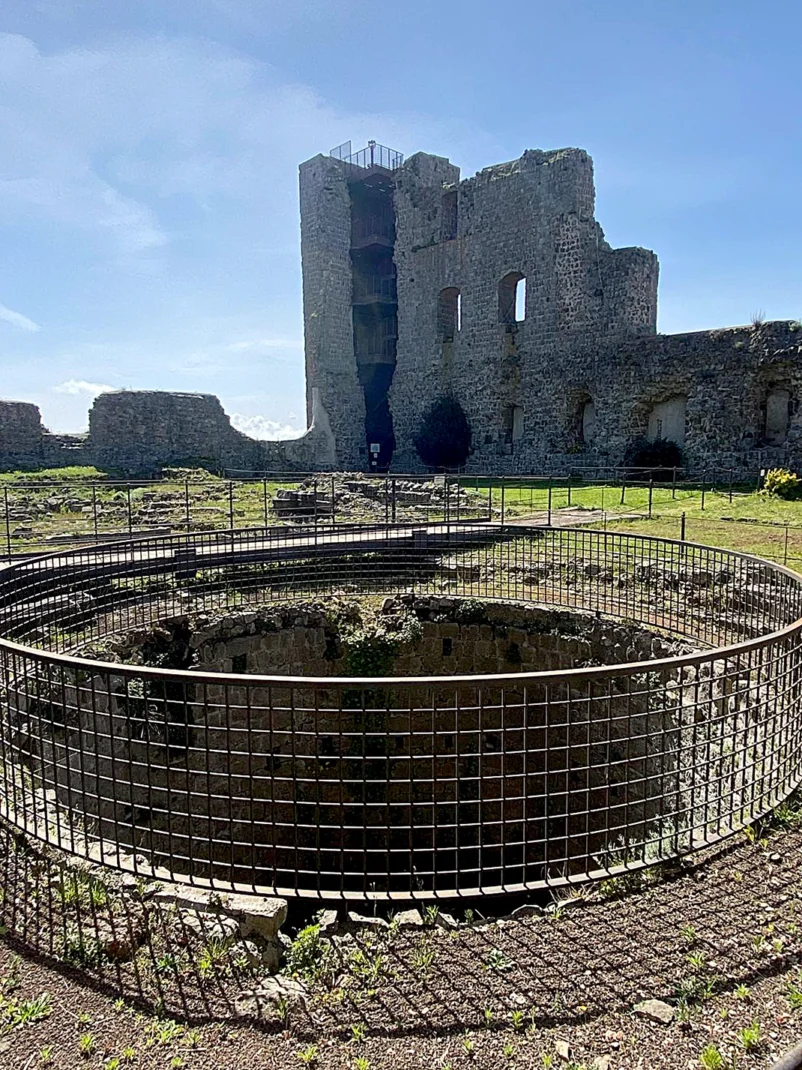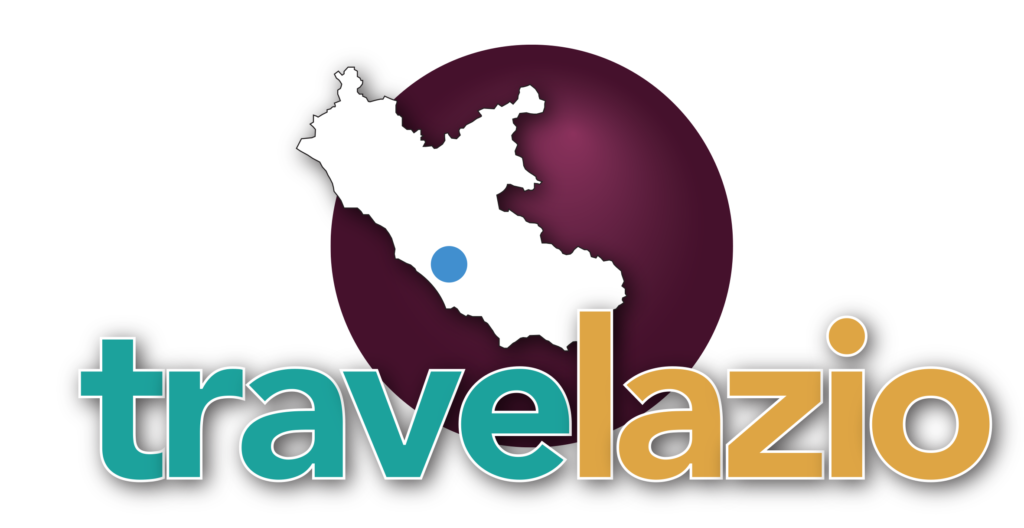

Montefiascone: The popes had a heavenly view here

In light of Pope Francis’ death Monday, we came to one of the most popular papal sites from a few centuries ago. Montefiascone, 100 kilometers (60 miles) north of Rome, has the well-preserved remains of a palace that served as the rector seat for the leader of a specific parish or church. The Rocca dei Papi, high atop a hill above Montefiascone (pop. 13,520), has one of the most magnificent views in Lazio.
The town sits at 1,940 feet (600 meters), above Lake Bolsena and its charming Centro Storico is the perfect place to while away a day. It’s a scenic train trip from Rome and greeting you is a glass of wine from
the town’s excellent Falesco winery.

Things to do
1 • Rocca dei Papi. The Palace of the Popes served an important role in the Catholic Church from 1207 to the second half of the 16th century.Thirty-six popes chose it as the rector seat of St. Peter’s Patrimony
in Tuscia for which it served various requirements. In that year of1207, Pope Innocenzo III turned the once wooden castle into a stone fortress. It also served as a residence between the 13th-16th centuries for various noble people within the church. Walk through the beautiful Giardino Rocca dei Papi to the main fortress.
Meetings and presentations are held in the palace’s big room and below is the Museo dell’Architettura. It displays examples of military architecture for castles built around Lazio and Tuscany which are explained in a very long-winded and dull audioguide. Rocca dei Papi’s highlight is the Torre dei Pellegrini. The Pilgrims’ Tower is a five-story structure built in the 15th century with magnificent panoramic views of Lake Bolsena, the St. Margherita Cathedral and the town below. A free telescope at top gives even better views.
Info: Rocca dei Papi, Piazza Urbano V, 39-351-244-0558, 10 a.m-1 p.m., 2:30-6 p.m. Tuesday-Friday, 10 a.m.-1 p.m., 3-6 p.m. Saturday-Sunday, 10 a.m.-1 p.m. Monday summer, museum €4.
2 • Cathedral of St. Margherita. Sticking up above the town just below the Rocca dei Papi is the magnificent dome of the town cathedral. It’s dedicated to St. Margaret of Antioch, the town’s patron saint.
Started in the 15th century, its temporary roof was destroyed by a fire. Architect Carlo Fontana, heavily influenced by the famed architect Francesco Borromini, built the landmark dome in 1674. At 27 meters in diameter, the dome is one of the largest in Italy. Walk inside and look up to the dome, with the turquoise circle at top surrounded by eight panels, each decorated with a religious image.
Info: Piazzale Santa Margherita, 9 a.m.-noon, 3-6 p.m.
3 • Falesco Famiglia Cotarella winery. Located 3.7 kilometers (two miles) south of Centro Storico, the winery covers 280 hectares (700) acres). The Cotarella family have been in the wine business
since the 1960s and the brothers Renzo and Riccardo opened Falesco in 1979. It has become one of the best wineries in Lazio. Last year it won the Iconic Wines & Wineries – Italian Excellence award from Forbes Italy. Wine tastings include two wines and a visit to the wine cellar.
It lasts 90 minutes and has a two-person minimum. At the Milioni Caffe’ just below Momma Pappa restaurant, I had the 2022 Falesco Syrah and it was very good. The company website describes it as “A wine with an intense colour and violet reflections, on the nose its scent is enhanced by hints of fresh fruit, cherry with spicy notes …” It retails for €12.55.
Info: Via Cassia 94, 39-07-61-827-032,
www.famigliacotarella.it/en,
9 a.m.-1 p.m., 3-7 p.m.
Monday-Tuesday, Thursday-Saturday.
Antonio da Sangallo the Younger star architect
The man responsible for restoring Rocca dei Papi was one of the most famous architects in Italy. Antonio da Sangallo was born Antonio Cardiani in Florence to a woodworker in 1484. He grew up poor but moved to Rome to pursue a career in architecture at age 20. He apprenticed as a carpenter but maintained good relationships with popes thanks to his uncle Giuliano da Sangallo who was designing St. Peter’s Basilica. After the sacking of Rome in 1527, Antonio took over the design through the 1530s until at least 1536. Besides St. Peter’s, he also designed Palazzo Farnese, which now serves as the French Embassy in Rome’s Piazza Farnese. Antonio was also a noted military architect and helped restore fortifications in Parma, Piacenza, Ancona and Orvieto. He died at 62 and is buried in St. Peter’s.
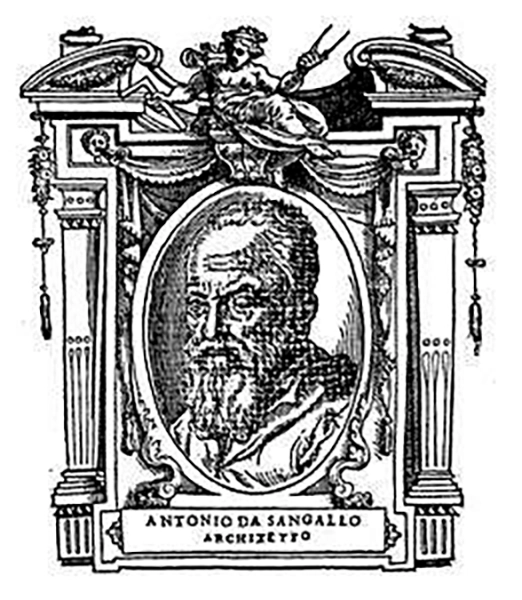
Where is it:
100 kilometers (60 miles) north of Rome
How to get there: Trains leave regularly from Rome’s Termini station for Montefiascone with a change in Orte.
The 1-hour, 45-minute journey is €7.
For more information:
Ufficio Turistico Montefiascone, Piazza Vittorio Emanuele, 39-07-61-832-060,
www.comune.montefiascone.vt.it/hh/index.php,
9:30 a.m.-12:30 p.m., 3:30-6 p.m. Saturday-Sunday.
Where to eat:
Lunch for two with dessert and a bottle of wine was €90.
